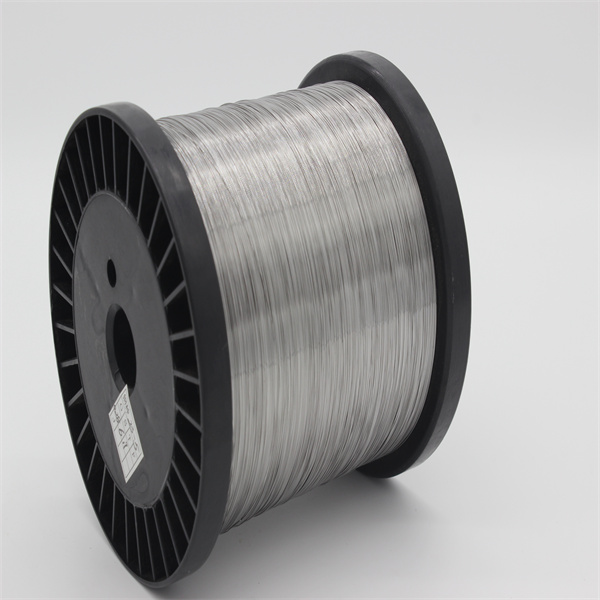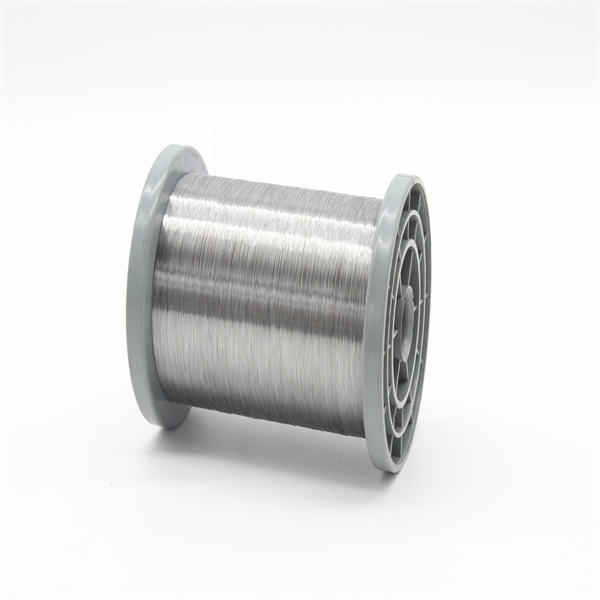Building your own coils puts you in the driver’s seat. Rather than buying disposable coil heads every week, you can make your own. It’s a fun hobby that vapers not only take pride in, but get to enjoy the fruits of their labor. The way to get good at it is through practice. Although, it’s perfectly reasonable for first-time builders to get it right on the first try.
This article focuses only on simple coil builds. There’s no need to grab your drills and swivels. If you want to learn about more complicated coils, check out our Clapton coil guide. GITANE High Temperature Nickel Alloys

While there are many types of vape tools and accessories you can use to wrap a vape coil, it’s best to keep it simple. There are plenty of good coil building kits on the market that supply you with everything you need, but you can also buy these things a la carte, or maybe you even have these supplies on hand already. Most rebuildable atomizers nowadays come with basic coil building supplies.
Micro and macro coils are created by taking a single piece of wire and wrapping it around a screwdriver, drill bit, or coil jig. The difference between a micro and a macro coil is the inner diameter of the coil. It’s that simple.
Micro: a micro coil build is a coil that has an inner diameter of up to 2 mm.
Macro: a macro coil build is a coil that has an inner diameter that’s 2.5 mm and above.
The bigger the inner diameter of the vape coil, the higher its resistance, and vice versa. Likewise, the thicker the gauge of wire used, the lower the resistance will be. We recommend using some basic 26-gauge Kanthal for your first few vape coil builds. It will fit fine in most atomizers and it’s very easy to work with.
It is worth noting that most atomizers nowadays can easily fit 3 mm coils and, as a result, you will rarely see people referring to coils as micro/macro. But if you are in the mood for some vape history, watch Rip Trippers’ video where he explains different coil sizes in detail.
Coil jigs are tools that help you wrap coils consistently by guiding the wire while it is getting wrapped on a rod. They are very useful tools, and they will help you make perfect coils every time with minimal effort.
Many jigs will come with detachable rods, while others will ship with separate pieces for different wire diameters. Some of the best-known coil jigs are manufactured by Coil Master, UD, and Kuro Concepts.
Wrapping coils using a coil jig is a fairly straightforward process. If you want to learn more, watch Sherlock Hohms’ video where he shows how to easily wrap a 2.5 mm coil using a coil jig.
You might have noticed that the decks of many atomizers are designed for two coils, i.e. they are made for dual-coil builds. Not all atomizers allow for both, and for those that do, you will usually get better performance with one of the two options. Check for the positive and negative posts of the atomizer, as each vape coil will have to go through both. Also, check the airflow of the atomizer. If the air is hitting the posts from both sides, chances are you are looking at a dual-coil atomizer.
When doing a dual coil build, it’s essential for both coils to be identical in size and form, to ensure that they heat up properly. Dual-coil builds obviously create more vapor than a single coil of the same specs, but require double the power to perform.
With two identical coils, the resistance should be exactly one half of each coil’s resistance. In other words, if you did a dual-coil build using two 0.6-ohm coils, your build should be 0.3 ohms. If you take out one of those coils, your resistance will go back up to 0.6 ohms.
Building for RDAs is usually a straightforward process. First, examine the deck and see if it is a dual or a single-coil atomizer. Then check the size of the deck and see how large your build can be—you don’t want your coils to touch the top cap as this will cause a sort. Most RDAs these days are good for at least 3 mm coils, and many allow for much larger IDs.
Once you have the number and size of your coils established, check the position of the posts. Some decks need the leads to point in the same direction, while others need them facing the opposite direction. Take note that some postless decks might require cutting the leads beforehand. Once you have your coils wrapped and ready, place the leads in the post holes, and secure them in place using the screws. You are now ready to wick them up.
Watch Grimm Green’s video to find out how to easily build dual macro coils for an RDA.
An RTA, as well as an RBA section of a sub ohm tank, will come with certain limitations. In most cases, there is not enough space in the deck for larger builds. Use your coil jig as a reference and see how big a coil you can get away with. If you think that your vape coil would end up touching the chimney, go with a smaller diameter build—you wouldn’t want to cause a sort. After getting everything ready, you can secure the leads in place and wick your coils.
Check out this video of Mike Vapes building on the SMOK RPM RBA deck. You’ll notice that building on an RBA may get fiddly, but know that in most cases you’ll be getting a much better performance compared to factory coils.
Once you have mastered single strand wire builds, you can go to the next level. Twisted coils can be easily made by hand and require no fancy equipment. They will produce better flavor than single wire coils due to the larger surface area, and while your resistance will be lower, it won’t be halved due to the use of more wire per strand.
There are many ways to twist wire, but one of the easiest is the pen method, used by Vape Don’t Smoke in the following video.
Another multi-strand type of wire that doesn’t require tools and drills is the parallel coil. In essence, a parallel coil is made out of two or more wires wrapped next to each other. Resistance is divided by the number of wire strands, so make sure you are aware of your device’s limits when building parallel coils. For beginners, a dual parallel 26-gauge Kanthal coil would be a nice starting point.
For more info, watch Rip Trippers tutorial on how to build a parallel coil by hand. For even better results you can use a coil jig: just wrap the first coil using the jig’s guide, and manually wrap the second coil in between the gaps.
Wrapping vape coils can appear to be much more difficult than it really is. Granted, it can get difficult when getting into complex builds, but the basic vape coils like those on this page are relatively simple to do, with only basic tools and dexterity needed—and maybe a little patience. Don’t give up if you struggle the first couple of times you try it. Rebuilding and wrapping coils offer the user cost savings and control over the vape in a way that pre-made coils just cannot do.
“The bigger the inner diameter of the vape coil, the higher its resistance” does not make much sense without specifying its because the wire will be longer for the same coil length, better be thorough : “The larger the diameter the longer the wire, and the longer the wire the higher the resistance”.
THANKS.Commentary giving typically French lessons…
Thank you for a good article. Over the last month, I purchased a Goon 22mm and a Kayfun Mini for different reasons. I like their unique qualities. While enjoying both, I quickly realized that if I built a coil for both, I could soon be saving money. Plus, I would have the satisfaction of “the build”. To date, I have order a Coil Master coil winding set and some Kanthal 26 gauge wire. Both are being shipped sometime this week. I reckon the 26 gauge will be fluid enough to bend and hold around the tiny Kayfun screws without losing… Read more »
Thanks for the comment Barry! Yes, building isn’t for everyone but there is nothing like vaping on a coil that you created yourself. Rolling cigarettes wasn’t ever this much fun…
nice article to get fear out of coils. I tried and finally settled for simple coil with slight gap. the gap ensures that I don’t have to worry about hotspots. and also that I use titanium and was concerned about heating it red. though I found it behaves much better than steel when heated. I actually liked the bluish color of titanium after it is heated slight red but I discarded it after reading about heating issues. steel 316l also develops slight patina in normal use. the other steel I got doesnt look as great so I presume it is… Read more »
My wife recently pulled out the old Vamo eHuge the other day – her iJoy RDTA internal battery is poor – and has plonked a cheap Aspire CE5 thing on it. I have a spare ZEUS RTA and think it will look the Business on the Big Mod. It is only 18 watts though and cannot fire below 1.2 ohms. What would be a suitable build (or parameters for) on the Zeus? It needs to be High Resistance but NOT have so much material it takes for ever to heat up…! BUT needs to be big enough to take enough… Read more »
I have some aluminum alloy (kanthal) clapton coils that have 5 wraps and 3 mm diameter. These run at 0.8 ohms. Maybe if you increase the diameter by 0.5mm and add an extra coil you may be able to get 1.2 ohms, but I’m not sure.
Hi, i just buy Master of Cloud SS 316L 28Ga. And i have Zeus X RTA and planning to have dual coils build. Please help me, how much wraps i have to do for each coils? Sorry if my language is sucks, this is not my native language..

High Resistance Wire Heating Element Hi Rudy, You will need a lot of wraps (I am guessing over 10) to cover the distance between the posts, unless you space the coil. But 28-gauge wire is not the best option for building on the Zeus X. I suggest using 24-gauge Kanthal, or some type of a Clapton coil for it.